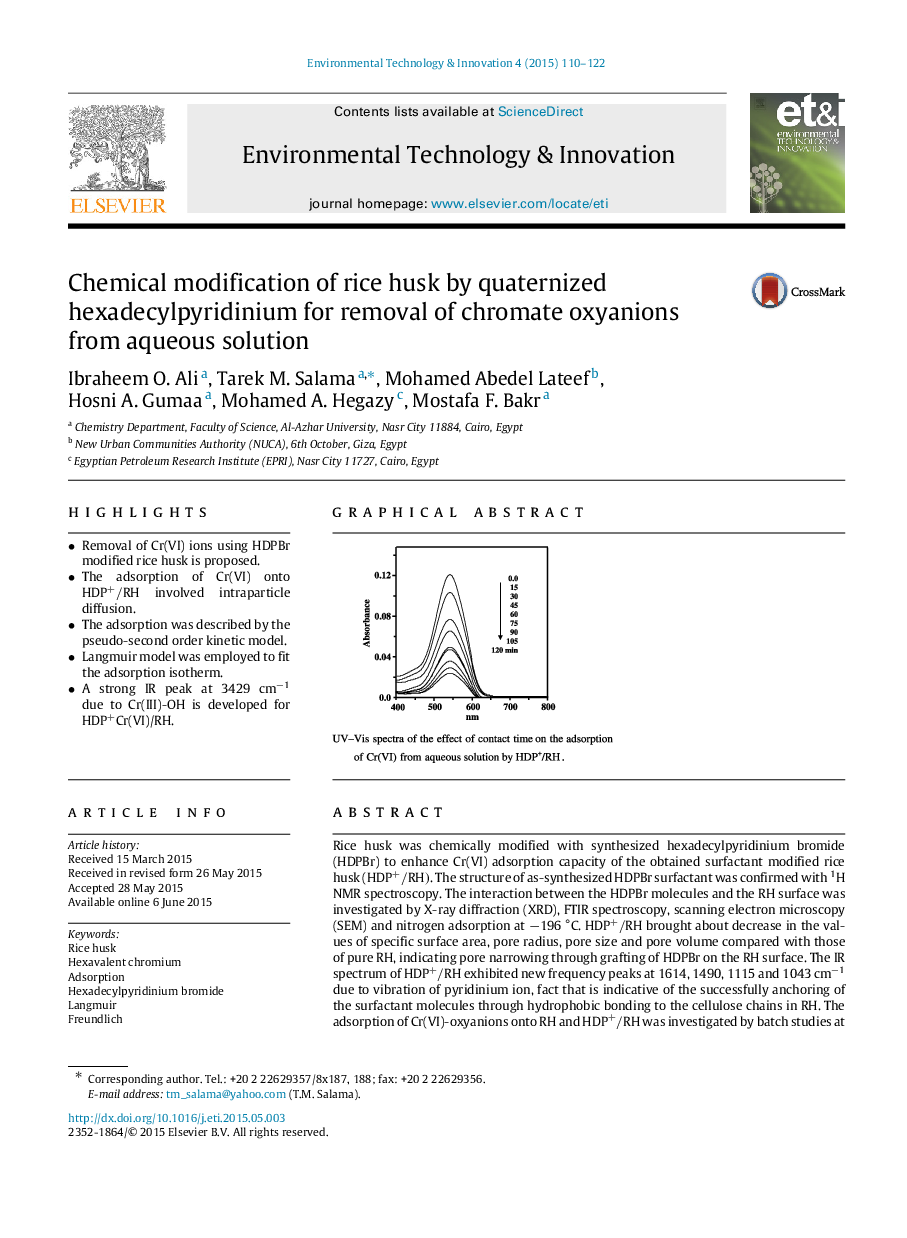| کد مقاله | کد نشریه | سال انتشار | مقاله انگلیسی | نسخه تمام متن |
|---|---|---|---|---|
| 4428227 | 1619284 | 2015 | 13 صفحه PDF | دانلود رایگان |
• Removal of Cr(VI) ions using HDPBr modified rice husk is proposed.
• The adsorption of Cr(VI) onto HDP+/RH involved intraparticle diffusion.
• The adsorption was described by the pseudo-second order kinetic model.
• Langmuir model was employed to fit the adsorption isotherm.
• A strong IR peak at 3429 cm−1 due to Cr(III)-OH is developed for HDP+Cr(VI)/RH.
Rice husk was chemically modified with synthesized hexadecylpyridinium bromide (HDPBr) to enhance Cr(VI) adsorption capacity of the obtained surfactant modified rice husk (HDP+/RH). The structure of as-synthesized HDPBr surfactant was confirmed with 1H NMR spectroscopy. The interaction between the HDPBr molecules and the RH surface was investigated by X-ray diffraction (XRD), FTIR spectroscopy, scanning electron microscopy (SEM) and nitrogen adsorption at −196 °C. HDP+/RH brought about decrease in the values of specific surface area, pore radius, pore size and pore volume compared with those of pure RH, indicating pore narrowing through grafting of HDPBr on the RH surface. The IR spectrum of HDP+/RH exhibited new frequency peaks at 1614, 1490, 1115 and 1043 cm−1 due to vibration of pyridinium ion, fact that is indicative of the successfully anchoring of the surfactant molecules through hydrophobic bonding to the cellulose chains in RH. The adsorption of Cr(VI)-oxyanions onto RH and HDP+/RH was investigated by batch studies at 20 and 50 mg L−1 initial concentration. HDP+/RH was evaluated as an efficient adsorbent for the Cr(IV)-oxyanions than RH, which rapidly attained equilibrium after 45 min compared with the latter at 110 min. This allows evidence for the electrostatic interaction between the Cr(VI)-oxyanions and HDP+-promoted RH. The adsorption data fitted reasonably with the Langmuir and Freundlich models for HDP+/RH, similarly the pseudo-second-order model shows a better fitting. The intraparticle diffusion analysis suggests that adsorption of Cr(VI) ions by HDP+/RH involved intraparticle diffusion which contributed to the rate of the process.
Figure optionsDownload as PowerPoint slide
Journal: Environmental Technology & Innovation - Volume 4, October 2015, Pages 110–122
